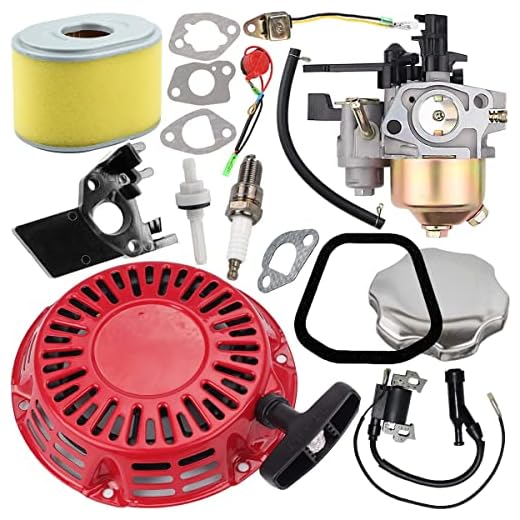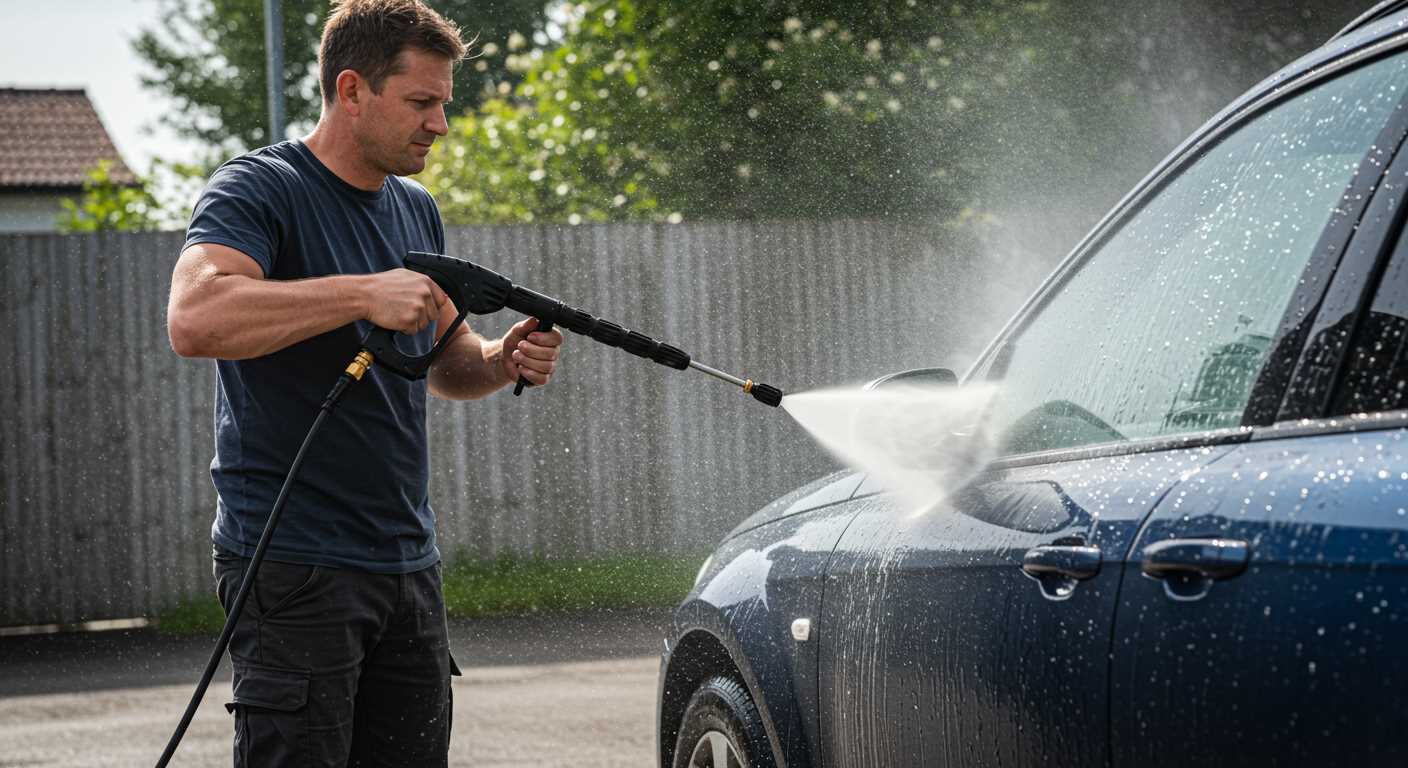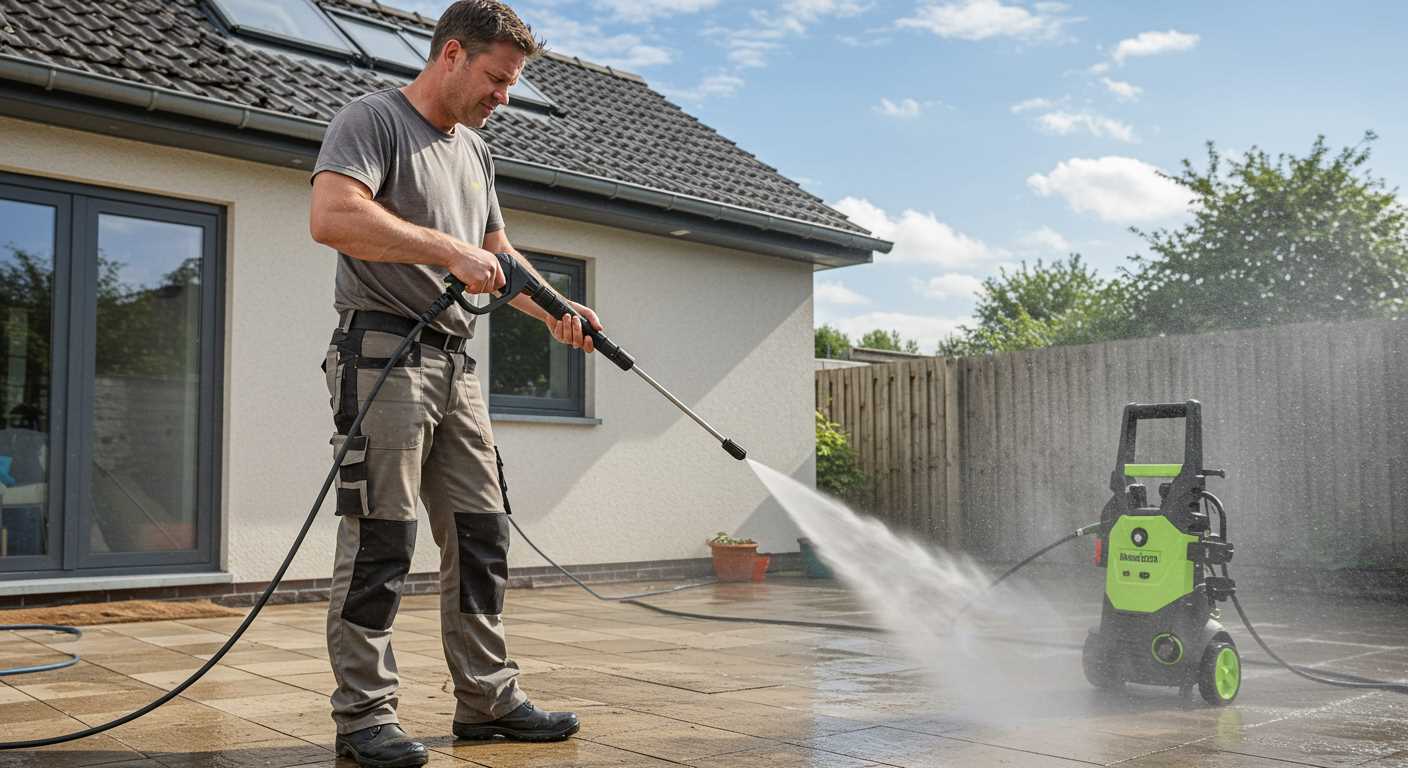

Check the fuel level first. Topping up with high-quality gasoline can resolve a number of shutdown-related issues. Contaminated fuel or improper mixing can cause engine failure, so always ensure you’re using clean, the appropriate mixture for optimal performance.
Next, inspect the air filter. A clogged filter can restrict airflow, leading to overheating and automatic shutdown. Clean or replace the filter as necessary to maintain a steady flow and prevent choking the engine.
Examine the spark plug for wear or damage. A faulty spark plug can cause intermittent ignition, resulting in your machine stalling. Regularly check and replace them according to the manufacturer’s guidelines for reliable starts.
Don’t overlook the oil level and quality. Insufficient or degraded oil can lead to overheating and engine damage. Check the oil regularly and replace it based on the recommended maintenance schedule. If you notice any contaminants in the oil, it’s time for a change.
Lastly, consider checking the fuel lines. Cracks or blockages can disrupt the fuel supply, causing erratic performance. Ensure that all connections are tight and free of debris to promote smooth operation throughout your cleaning tasks.
Understanding Fuel Supply Issues
Inspect the fuel filter regularly; a clogged filter restricts flow and creates pressure inconsistencies. If performance dips, replace it to enhance fuel delivery.
Check the fuel lines for damage or blockages. Cracks or kinks can severely limit the supply. Replace any compromised sections to ensure a smooth flow of fuel to the engine.
Fuel Quality Matters

Use only fresh fuel, ideally less than 30 days old. Stale fuel can lead to poor combustion and operational hiccups. If you suspect fuel age, drain the tank and refill with fresh petrol.
Consider adding a fuel stabiliser if the equipment will sit unused for extended periods. This prevents the fuel from degrading and obstructing the system.
Fuel Pump Functionality
Examine the fuel pump; if it fails, the system won’t deliver adequate fuel to the engine. Listen for unusual noises during operation; a malfunctioning pump often produces a buzzing sound. Replace if needed to maintain optimal performance.
Checking the Air Filter Condition
.jpg)
Start by inspecting the air filter. A clogged or dirty filter can restrict airflow, leading to performance issues. Remove the filter and examine it for dirt or debris. If it appears excessively dirty, replace it with a new one to ensure optimal air intake.
For reusable filters, clean them with soap and water, then allow them to dry completely before reinstalling. Regular maintenance of the air filter can prevent operational hiccups and prolong the lifespan of your machine.
Check the manufacturer’s recommendations for maintenance intervals, as neglecting this component can lead to engine inefficiency. If performance remains subpar after replacing or cleaning the filter, further investigation into other components may be necessary.
Maintaining clear airflow is crucial. Ensure that the area around the air intake is free from obstructions to optimise performance. This small step can make a significant difference in how your equipment runs.
Examining the Spark Plug Performance
Inspect the spark plug regularly to ensure optimal functioning. A clean, well-functioning spark plug ignites the fuel mixture effectively, preventing interruptions in performance. If you notice a buildup of carbon deposits or oil, replace the spark plug. This simple maintenance step can dramatically enhance engine reliability.
Check the gap between the electrodes. An incorrect gap can lead to poor ignition and frequent stalling. Use a feeler gauge to measure the gap and adjust it according to the specifications in your owner’s manual. This step ensures the spark is strong enough to ignite the fuel.
If you encounter starting issues, inspect the spark plug for signs of wear or damage. Cracks or corrosion indicate that it needs replacement. Investing in a high-quality spark plug can ensure better durability and performance under pressure.
After removing the spark plug, conduct a quick examination of its colour. A tan or light brown colour signifies proper combustion, whereas a black, sooty appearance can point to fuel-related problems which may require evaluating the fuel mixture used.
Last but not least, confirm that the spark plug is properly torqued to the manufacturer’s specifications. An improperly seated spark plug can lead to performance issues over time.
Assessing the Water Supply Requirements
Check the water supply before assessing other issues. Ensure a steady flow from the source. Low flow may cause malfunctioning.
Follow these steps to confirm your water supply meets the necessary demands:
- Measure the water flow rate. Use a bucket to collect water for a specific time and calculate the litres per minute. A minimum of 7 litres per minute is often required.
- Examine the source of the water. Ensure you are using clean, fresh water without contaminants. Dirty water can clog internal components.
- Inspect hoses and fittings for kinks, leaks, or blockages. Clear any obstruction to maintain optimal water flow.
Check the water inlet filter regularly. Clean or replace it if it appears dirty. A clogged filter can impede water flow and impact performance.
Monitor the temperature of the water. Using water that is too hot can damage components and lead to premature failures.
If using a portable water tank, ensure it is filled adequately to prevent interruptions during operation.
After confirming the supply, observe the machine during operation. If any irregularities occur, re-evaluate the water supply parameters.
Troubleshooting Overheating Problems

To prevent overheating, ensure the cooling system is functioning correctly. Check for blockages in vents or cooling fins, as debris can obstruct airflow and lead to heat accumulation.
Inspecting the Cooling System
- Remove any accumulated debris from the surface and around the engine.
- Verify that the cooling fins are clear and free of obstruction.
- Use compressed air to clean the air intake if necessary.
Monitoring Operation Duration
Avoid prolonged operation without breaks. Continuous use can lead to heat build-up:
- Take breaks every 20-30 minutes to allow the equipment to cool.
- Monitor the temperature of the engine casing; if it feels excessively hot, stop operation immediately.
Examine oil levels and quality as well. Low or degraded oil can contribute to overheating. Ensure the engine is properly lubricated and the oil is replaced as recommended by the manufacturer.
Addressing Ambient Temperature
High ambient temperature plays a role. Operate the unit in shaded areas to reduce heat exposure:
- Store the equipment in a cool, dry environment when not in use.
- Avoid operation during peak heat hours, typically midday.
Regular maintenance checks can prevent overheating issues. Adhering to these practices ensures optimal performance and extends the lifespan of your equipment.
Identifying Faulty Safety Features

Inspect safety mechanisms thoroughly. Faulty components like thermal relief valves or low-oil sensors can activate prematurely, cutting off operation. Begin by checking the thermal relief valve; if it triggers too soon, it may need replacement. Look for signs of damage or blockages that could affect functionality.
Low-Oil Shutdown
Verify the oil level; a low reading triggers the shutdown feature. Ensure the correct type of oil is used. If the sensor is malfunctioning, it may need recalibration or replacement.
Pressure Relief Valve
Check the pressure relief valve to ensure it functions correctly. A clogged valve can cause pressure buildup, leading to sudden stops. Clean any debris found, or replace a damaged valve to restore functionality.
| Safety Feature | Signs of Malfunction | Recommended Action |
|---|---|---|
| Thermal Relief Valve | Triggers too soon or leaks | Clean or replace the valve |
| Low-Oil Sensor | Shuts down with adequate oil | Calibrate or replace the sensor |
| Pressure Relief Valve | Ongoing pressure buildup | Clean or replace the valve |
These assessments often resolve issues that disrupt service. Regular maintenance of these safety features will extend the lifespan and reliability of the equipment. Always consult the user manual for specific instructions related to your model.
Looking into Carburettor Blockages
Start by inspecting the carburettor for any signs of blockage. Even a small obstruction can disrupt fuel flow, causing performance issues. Remove the air filter and check for dirt accumulation or fuel residue.
Using compressed air, gently blow through the carburettor to clear out any debris. Pay attention to the jets and passages, as these are crucial for proper fuel-air mixing. If blockage persists, disassemble the carburettor for a thorough cleaning using a carburettor cleaner solution.
Replace any damaged gaskets or seals during reassembly to prevent leaks. After reassembling, adjust the idle speed and mixture settings according to the manufacturer’s specifications for optimal performance.
Make sure to test the equipment after servicing. If issues arise again, consider that the fuel tank may contain impurities or that the fuel itself might be stale. Always use clean, fresh fuel to ensure reliable operation.
Investigating Engine Oil Levels and Quality
First, check the oil level in the engine. Insufficient lubrication can lead to overheating and premature shutdowns. Ensure the oil is at the appropriate level by using the dipstick; add oil if necessary, using the type recommended in the owner’s manual.
Next, assess the oil quality. Contaminated or degraded oil loses its ability to lubricate effectively. If the oil appears dark and gritty, or if it has a burnt smell, it’s time for an oil change. Follow the manufacturer’s recommendations for the frequency of oil changes, as maintaining clean oil will significantly enhance performance.
Testing for Proper Viscosity
Use the correct viscosity oil specified for your engine. In colder temperatures, a thinner oil may be beneficial, while in warmer conditions, a thicker oil can provide better protection. Always refer to the owner’s manual for guidance to avoid potential damage.
Seals and Gaskets Inspection
Inspect engine seals and gaskets for any signs of leaks. Oil leaks not only lower the oil level but may also affect engine performance. Replace any damaged or worn parts to maintain optimal functioning and prevent further complications.
By keeping an eye on engine oil levels and quality, you can prevent many issues and ensure reliable operation.








